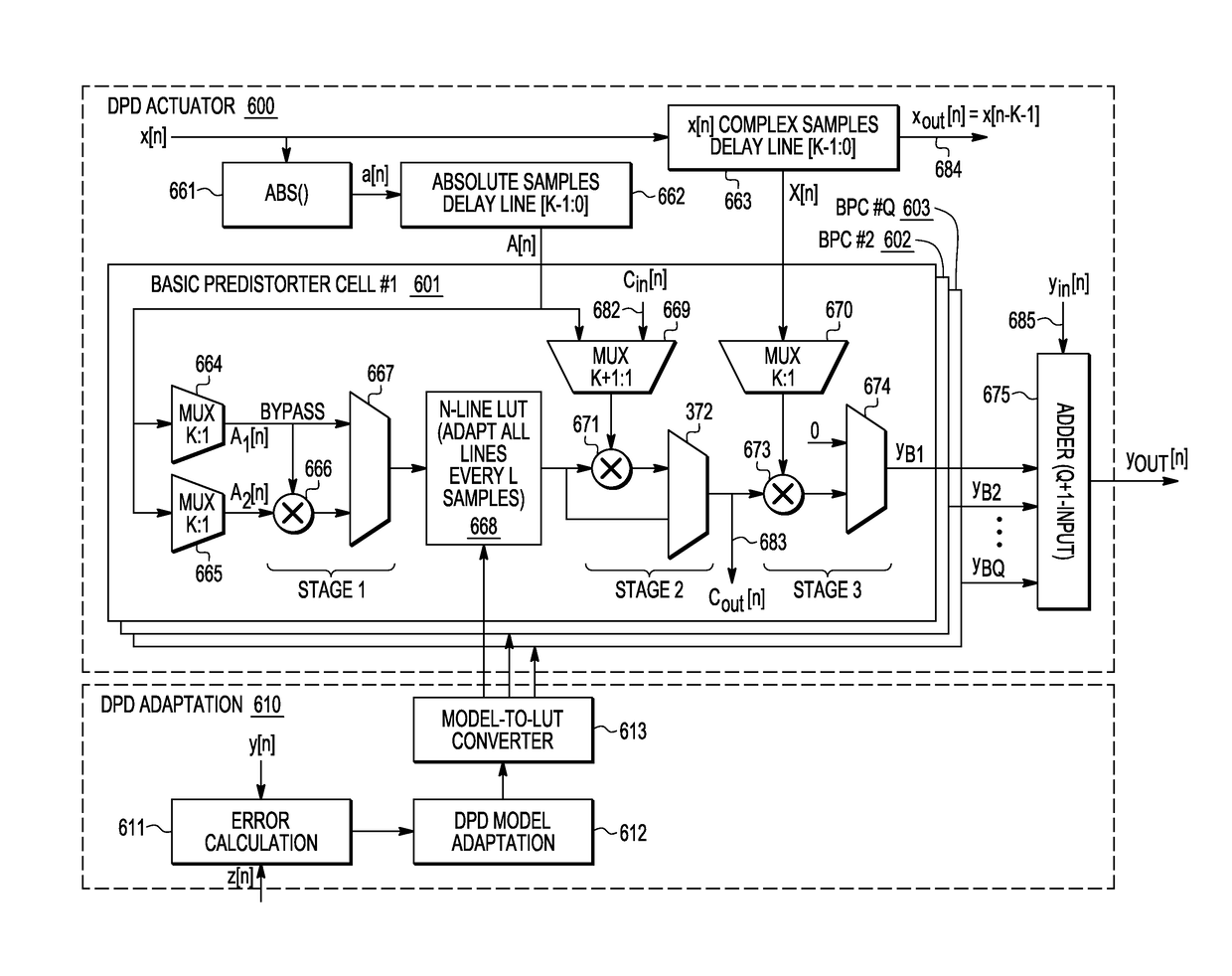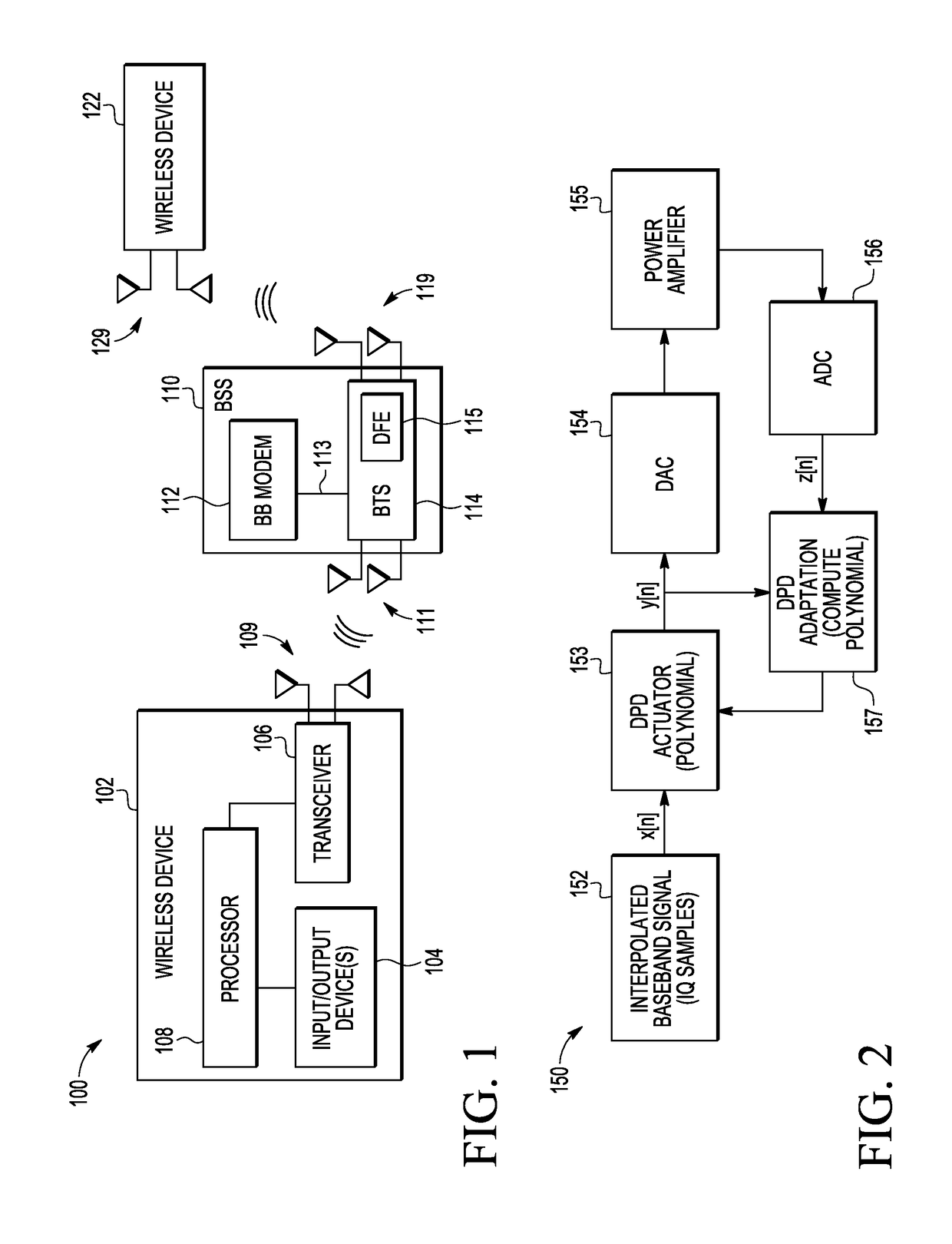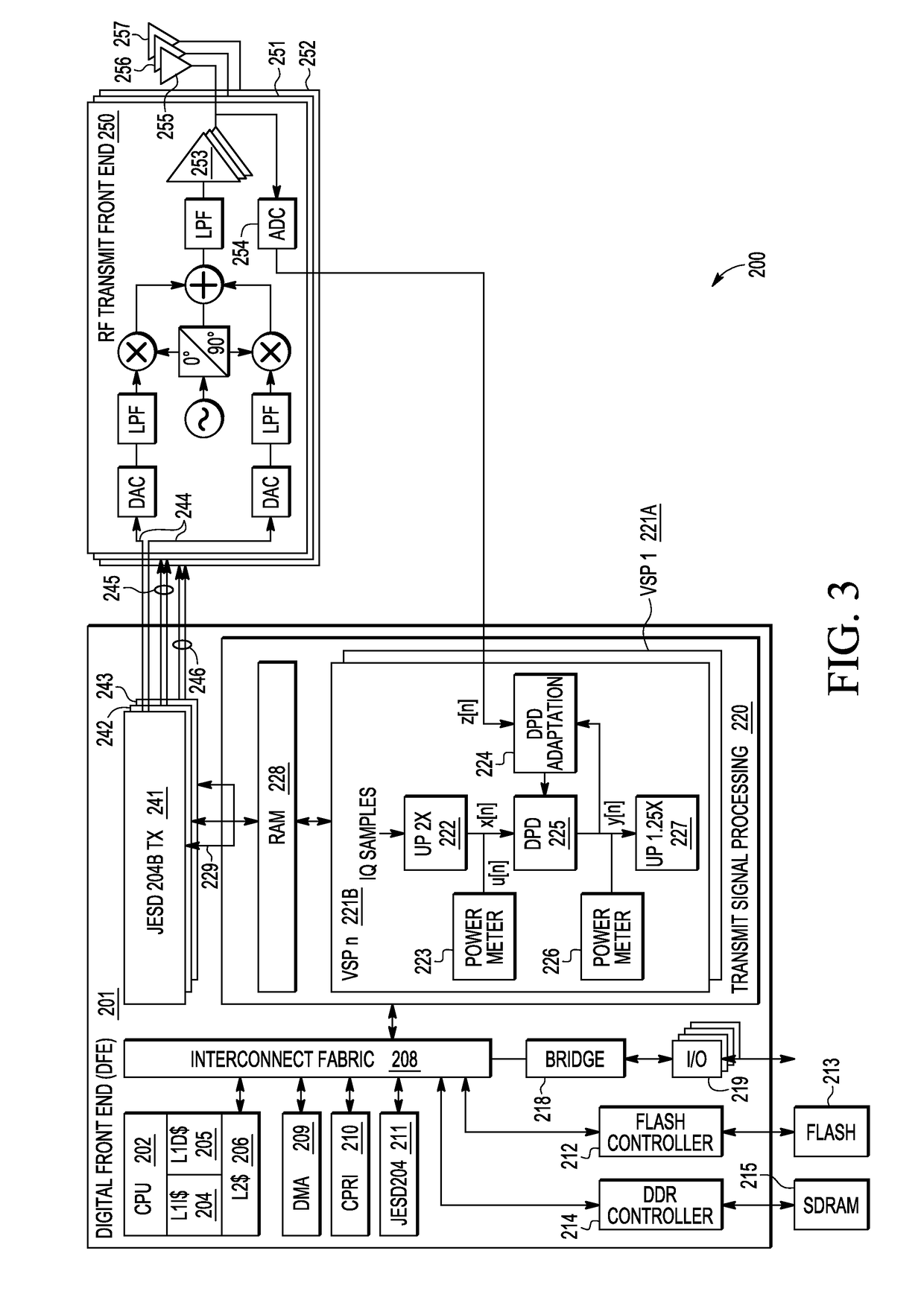Fixed-Point Conjugate Gradient Digital Pre-Distortion (DPD) Adaptation
a conjugate gradient and digital predistortion technology, applied in the field of information processing, can solve the problems of inconvenient adjustment of the input signal, and inconvenient adjustment of the output signal,
- Summary
- Abstract
- Description
- Claims
- Application Information
AI Technical Summary
Benefits of technology
Problems solved by technology
Method used
Image
Examples
Embodiment Construction
[0013]A system, apparatus, and methodology are described for efficient adaptation of a digital predistortion actuator by using fixed-point conjugate gradient scheme to evaluate the digital predistortion system polynomials with a flexible high performance digital pre-distortion (DPD) hardware or software solution which performs pre-distortion processing on received baseband signal samples to overcome power amplifier non-linear operation (a.k.a. distortion). In selected embodiments, a single chip digital front end processor at a base station performs digital pre-distortion on a composite multi-carrier waveform using a polynomial DPD actuator or LUT-based DPD actuator which may use integrated predistorter hardware cells to evaluate Volterra series memory polynomial terms and higher order cross terms (e.g., type 1, 2 and 3) to model the inverse operation of power amplifiers (PA). In order to track changes in the performance of the power amplifier, the polynomial coefficients in the DPD ...
PUM
 Login to View More
Login to View More Abstract
Description
Claims
Application Information
 Login to View More
Login to View More - R&D
- Intellectual Property
- Life Sciences
- Materials
- Tech Scout
- Unparalleled Data Quality
- Higher Quality Content
- 60% Fewer Hallucinations
Browse by: Latest US Patents, China's latest patents, Technical Efficacy Thesaurus, Application Domain, Technology Topic, Popular Technical Reports.
© 2025 PatSnap. All rights reserved.Legal|Privacy policy|Modern Slavery Act Transparency Statement|Sitemap|About US| Contact US: help@patsnap.com



